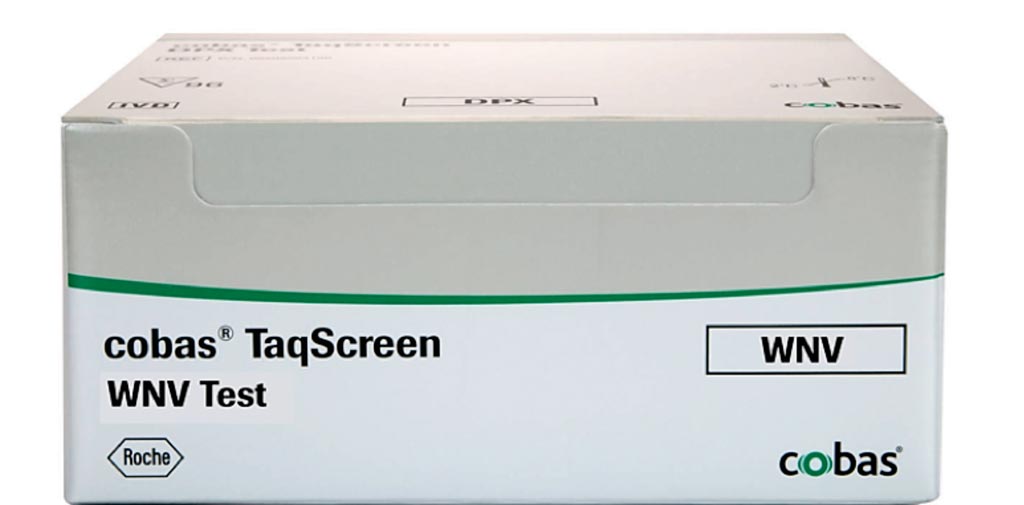Routine Donor Screening Revealed Acute Usutu Virus
By LabMedica International staff writers
Posted on 20 Apr 2017
Usutu virus (USUV) an Old World flavivirus included in the Japanese encephalitis virus (JEV) antigenic complex is transmitted by mosquitoes to birds that act as the main amplifying hosts, while humans are considered incidental or dead-end hosts.Posted on 20 Apr 2017
USUV can cause Usutu fever in humans with mild to severe symptoms characterized by fever, rash, jaundice, headache, nuchal rigidity, hand tremor, and hyperreflexia. Humans were considered incidental hosts with very low prevalence, but recent data from Italy indicated that human USUV infection may not be a sporadic event and is more frequent than West Nile Virus (WNV).

Image: The cobas TaqScreen WNV test: a real-time polymerase chain reaction (PCR) test to detect West Nile virus (WNV) RNA in plasma from blood, organ and tissue donor (Photo courtesy of Roche Diagnostics).
Scientists at the Bernhard Nocht Institute for Tropical Medicine and their colleagues followed up blood donors being routinely screened for WNV between 1 June and 31 December 2016. There were 13,023 blood donations from the University Hospital Aachen.
In a plasma pool of 16 donors, the scientists detected WNV-positive (threshold cycle, Ct: 40.5) using cobas TaqScreen WNV Test with a sensitivity of 206.4 copies/mL per single donation. The blood donor was a German woman in her late 20s, without any travel history outside Germany in the previous seven months. Furthermore, she had not left the Aachen region at all in the three months prior to blood donation. The healthy donor had not experienced any illness or symptoms in the six weeks before donation. She reported several mosquito bites before the donation.
The team extracted RNA of plasma and urine samples were tested for the presence of flavivirus RNA with pan-flavivirus real-time reverse transcription–polymerase chain reaction (RT-PCR). A positive PCR result was obtained with RNA from the plasma sample and direct Sanger sequencing of the PCR amplicon showed USUV nucleic acid sequence. Attempts to isolate USUV in cell culture using the donor plasma were not successful.
The concentrated and purified RNA was further subjected to deep sequencing using in-house next-generation sequencing pipeline in order to obtain larger fragments of the USUV genome. Thus, the scientists were able to successfully recover about 60% of the USUV polyprotein gene. USUV from the donor plasma showed 99% homology with those found in the birds during the 2016 epizootics corresponding with the same region from where the donor originated.
The authors concluded that during the ongoing USUV epizootics in Germany, blood transfusion services, public health authorities and clinicians should be aware of increased human USUV infections. The study was published on April 6, 2017, in the journal Eurosurveillance.














